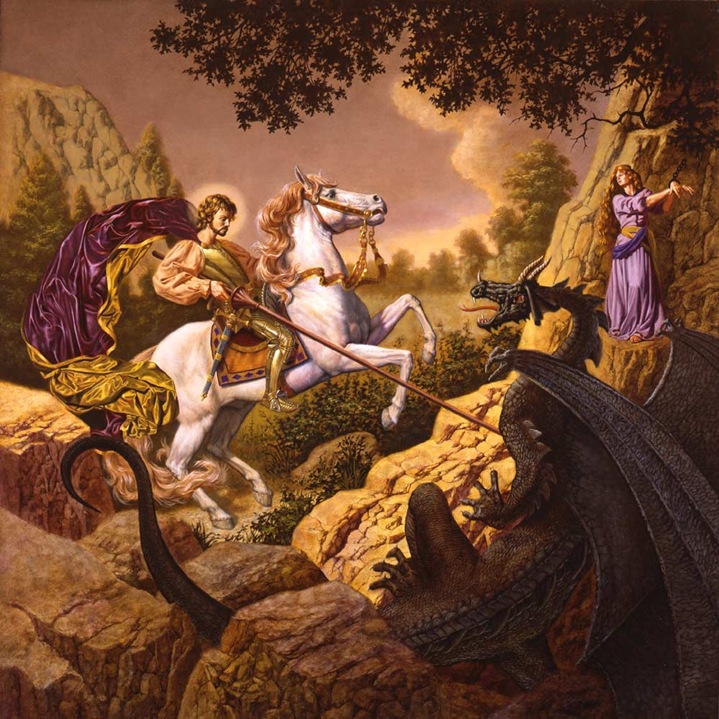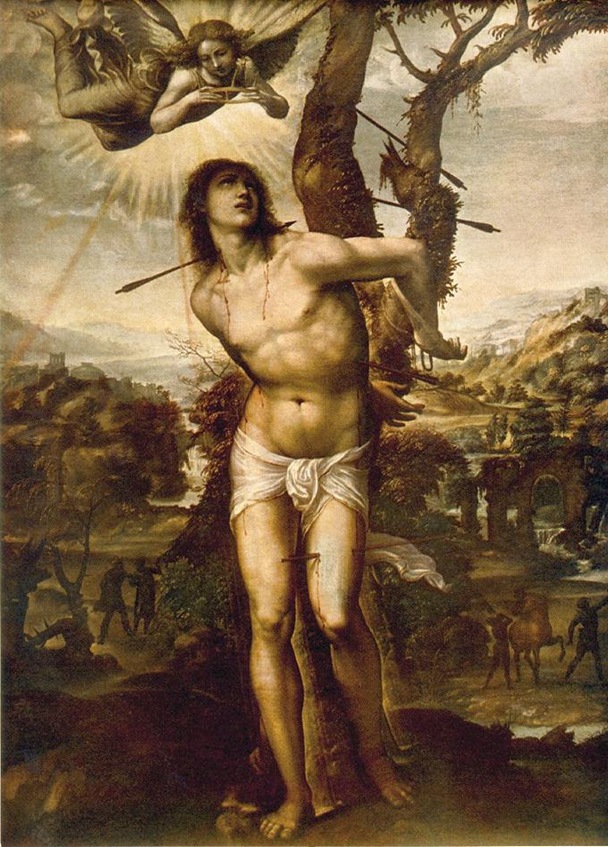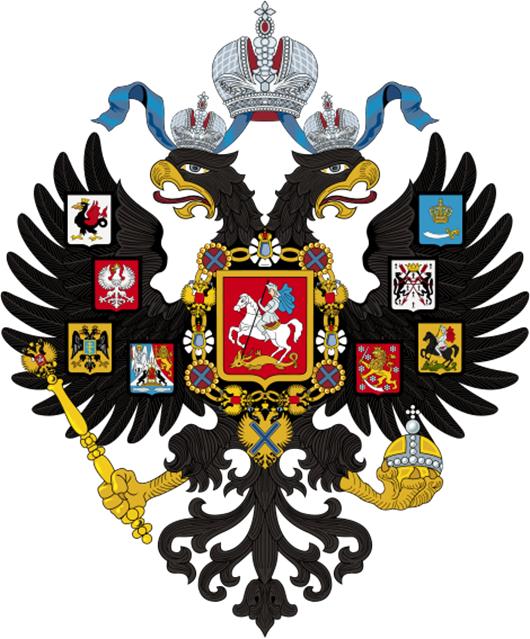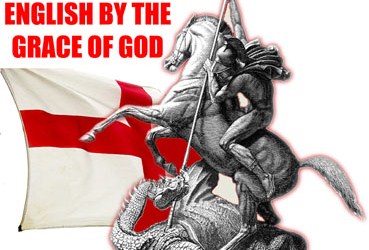Sven Longshanks
Daily Stormer
April 23, 2014

Saint George is one of the most enduring characters from Aryan history, his feast day is April 23rd and he will have been honored throughout Europe for 1700 years this August. His courage and integrity in the face of adversity were held up as ideals to be emulated by both the Church and the State. His fighting prowess in the Persian wars made him appeal to the military and the monarchy and his refusal to give in to being bribed and tortured made him a hero of the Christian Church. His chivalrous and honorable nature was looked up to by Knights all over Europe as the standard to live by. Although his popularity has been waning in recent years with the loss of our identity and culture, the life of Saint George and the events of that time are still relevant for today. The fact that he was held in such high esteem shows the supreme importance that was placed on good character traits by our ancestors.
The Life of Saint George
George was born to Christian parents in Lydda, Palestine in AD280, two decades before Diocletian’s famous persecution of Christians that was to follow. His mother was the daughter of the Count of Lydda whose ancestors ‘the Saints who dwelt at Lydda’ were visited by Saint Peter and converted to the Christian faith by him. His father was the Governor of Lydda and was an exceedingly righteous and orthodox man who was well known to the Emperor Diocletian. When the young George’s father died when he was but 10 years old, a new governor of Palestine called Justus was brought in to replace him. He entreated George’s mother to give the boy to him as a son, that he might train him militarily and make him general over a multitude of soldiers. When he came of age, Justus sent him to Diocletian with one hundred soldiers and a letter of genealogy confirming his caste and the high rank of his parents. The Emperor gave him five thousand men to command and a large sum of money, which George distributed among the widows and orphans in his home town.
All the records show that he was as beautiful as he was strong and a courteous and honorable man too. The Emperor Diocletian sought to honor his father’s memory and rapidly advanced George through the ranks, until he was finally made Military Tribune of the Imperial Guard. During the Persian and Egyptian campaigns he served under Galerius, fighting by the side of his Christian friend Constantine who would later become Emperor. While in Persia he helped to reorganise the Christian Church there to help combat Manichaeism, which sought to blend Zoroastrianism with Christianity. These Christians were White people, they knew George as ‘Nestor’ (not to be confused with Nestorius) and they kept his name for themselves after he left, becoming known back then as the Nestorian Church. When he returned victorious from the Persian war he based himself in Beirut, where the bay of Saint George is named in honor of him. As part of his military duties he was sent from there to Britain, where he sailed through the Irish sea to meet up with his old friend Constantine in York. The traces of this visit can be seen in the naming of Saint George’s Channel where he sailed between Ireland and Wales and the heraldry of the City of York, which still contains his Red Cross on the silver background.
The traditions say that while he was in Britain he made a pilgrimage to Glastonbury to visit his kinsman Joseph of Aramathea’s resting place, as well as spending time at Caerleon-on-Usk which was the headquarters of the second Roman Legion. Caerleon-on-Usk was important as an Archiepiscopal See as well as for being the old seat of an Arch-Druid, with the transformation of Druidry to Christianity taking place there around AD182. It was while he was staying there that George would have first heard about Emperor Diocletian’s edict for the extermination of Christians.

Diocletian’s Persecution of Christians
Diocletian was a zealous adherent of the Pagan Roman religion and was already predisposed to blame the internal troubles of his kingdom on Christians, but Galerius had a far worse hatred for them and by this time had returned from the Persian wars. He saw his chance and took advantage of Diocletian’s dislike for them, by encouraging him to ban all soldiers from taking part in Christian rites. This caused the Christians to have to leave the army, but Galerius was still not satisfied with this and persuaded Diocletian to also order the destruction of their Churches, the burning of their scriptures and the deprivation of all their civil rights and offices. The excuse for this was that the oracle of Apollo at Didyma had told them that ‘the impious on earth’ were hindering the god’s ability to give advice. Considering the chaste and pious nature of the early Christians, it is debatable whether the oracle even meant them when referring to ‘the impious ones on earth’. Diocletian himself was even said to have once asked who were ‘those righteous ones on earth’ only to be answered by a Pagan Priest ‘They are the Christians’.
These persecutions had been going on for some time in Europe but were now happening in Britain too, with 10,000 being slaughtered in Caerleon-on-Usk alone. There is very little animosity recorded between the Christians and the Pagans at that time though, the persecution seems to have come entirely from the State and have originated from Galerius more than Diocletian. George had always been good friends with Diocletian and thought that he might be able to talk him round, so with this in mind, he set sail for his old home of Lydda. When he got there he freed his slaves, sold all his possessions and distributed the proceeds among his household. He kept two servants with him, one of whom we can thank for recording what happened to George after this point.
Diocletian and Galerius had been staying the winter in Nicomedia when a huge fire broke out, which Galerius then blamed on the Christians. While this was happening George was sailing there from Lydda and when he got to Nicomedia it was the day after Diocletian had demolished the Church there. The first edict had just been against Christian ownership of property, but the second one was to destroy their churches and to take their lives. As soon as George saw this edict published he pulled it down, tore it to pieces and proclaimed his allegiance to Christ, whereupon he was seized by Diocletian’s soldiers and thrown into prison. He was then pulled up in front of Galerius and Diocletian in a tribunal where he tried to appeal the Christians’ cause but to no avail.
The instruments of torture were waved in front of him but he withstood all their threats and refused to recant. They threw him back into prison again where he stayed for some years, occasionally being brought to them to be tortured, or to see if he would accept bribes. A boulder was put on his chest to squash him for the night, but still he remained true to his convictions, he was bound to a wheel with metal spikes through the rim, yet still he would not recant and worship the strange gods of imperial Rome. Other tortures included being thrown into a pit of water and lime for three days, being made to run in iron sandals, molten lead poured down his throat and sixty nails hammered into his head. Whether all these tortures happened to him or not, they give a good idea of the immense courage and faith that the White Christians of the time had, in resisting them.

The Martyrdom of Saint George and the Allegory of the Dragon
One of the times that he was brought up from prison it was thought that if he were treated to all the niceties of life he might change his mind, so Galerius had him brought to his own palace to work on him there. It was here that the legend of the dragon and the maiden probably originates. Galerius was referred to as a dragon and a serpent in the records of the time due to his cruelty and while George was at the Palace, he succeeded in converting Diocletian’s wife the Queen Alexandra, to Christianity. Galerius responded to this by ordering her to be imprisoned and tortured as well. No matter what they tried on him, George was steadfast in his faith. Abba Theodotus, Bishop of Ancyra AD326, writes of him:
‘But neither his father’s rank, nor the glory of his soldierhood could overcome the decision of the truly noble Lord George, nor induce him to forsake his piety and perfect faith. God strengthened him on every side like a precious adamant that he might never be moved. And what are the qualities of this brave soldier of Christ, Lord George; his upright and unwavering faith in God; his certain hope; his sincere love; his gentleness to all creatures both great and small; his benignity; his zeal; his patient endurance of the cares of this life; the blamelessness of his soul and his taking his stand boldly at the tribunal; his freedom of speech before governors entirely without fear of man; his patient endurance of torture with great joy of heart, and other sufferings which he bore for the sake of our Lord Jesus Christ.’
Eventually they realised that they would not be able to break him and the command to behead him was given. By this time 38,000 Christians had already been executed and George, who could have quite easily just kept his head down in Britain and not made a point of defending the Truth, was to join them on April 23rd.

Winning the Battle From Beyond the Grave
Shortly after George’s execution his mission was accomplished and the oppressed Christians were released from the persecutions against them. They were freed from prison and had their lands returned, by an edict of toleration signed by Constantine, Galerius and Licinius. This happened after Diocletian had abdicated and Constantine’s own father had died, leaving him to be proclaimed Emperor at York and crowned King of Britain by the voice of the people at Silchester. After this Constantine formed an army supported by native British troops and returned to Rome ‘to plant the Cross of Christ upon the throne of the Caesars’. It was Constantine who at the council of Arles in AD314 proposed that his former comrade in arms be chosen as the model and example for the young manhood of Christendom. He built a magnificent church over the shrine at Lydda where Saint George’s remains were taken to, as well as one at the spot where he was executed.
By standing up for his people and being willing to die for his faith, George set a high standard for people to live up to. He is justly honored as ‘The Champion Knight of Christendom’, known for his heroic resolve and impeccable chivalry. The Orthodox Church gave him the title of ‘Captain of the Noble Army of Martyrs’. As a true soldier of Christ he fought against the physical foe in Persia and against the spiritual foe while in prison, refusing to give in to either torture or bribery.

Saint George embodies all that is good about the White man. If he sees an injustice in the world then he knows that it is down to him to put it right. He had the courage to withstand horrific torture and was prepared to give his life in defence of the truth. In the modern world that holds to no values other than material gain, it is not surprising that Saint George has ceased to be the role model for the young manhood of Christendom. Saint George is the archetypal White man, kind, honorable, chivalrous and courageous. The myths and legends that have sprung up around him are a testament to his strength of character. He is a Pan-European hero, appearing wherever White people have settled, staying behind even after they have left in Palestine, Lebanon and Persia, being justly revered by Nord and Slav alike. He is the Patron Saint of farmers, soldiers, butchers, horsemen and boy scouts, the subject of both the Russian coat of arms and the flag of England and the symbolism of the man fighting the dragon to rescue the woman, should be clear to White Nationalists everywhere.
This April 23rd take some time out from your day to have a think about Saint George, how his strength of faith enabled him to keep resisting until the very end, how he lives on in our myths and how he finally won the battle from beyond the grave.
For more information, a good book is George of Lydda, by I Hill Elder.
It can be purchased here in the UK at a good price.

